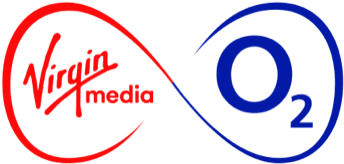Are you ready for your smartphone to become the “ruler of a kingdom of multiplying subjects”? This was how the Guardian’s Rory Carroll described the Internet of Things, in his round up of this year’s Consumer Electronics Show in Las Vegas.
The Internet of Things (or connected objects) has been much hyped for years. In fact the term was coined by Kevin Ashton, the British technology pioneer, back in 1999. Ashton co-founded the Auto-ID Centre at MIT which created the global standard for RFID tags. In his original definition, he said: “If we had computers that knew everything there was to know about things… we would be able to track and count everything, and greatly reduce waste, loss and cost. We would know when things needed replacing, repairing or recalling…The Internet of Things has the potential to change the world, just as the Internet did. Maybe even more so.”
All this sounds impressive and most convenient for us as consumers, so why are we still waiting for our alarm clocks to sync with our coffee makers in the morning?
Firstly, collective wisdom assumed that the objects around us had to get “smart”, with their own internet connection. But all we really needed was for those objects to interface with the computers already in our pockets – ie our smartphones – using RFID tags, QR codes or the next digital iteration of these.
Secondly, the idea of connected objects was a little ahead of its time – it needed certain technologies to converge and mature before the concept could really take off. So with mobile computing becoming mainstream, enabled by improved bandwidth, cloud storage and cheaper hardware, the time is now ripe for the Internet of Things.
But beyond the uber-clichéd smart fridge that restocks itself and warns us when produce is past its best, what use have we for this technology?
Well it seems that we’re slowly starting to realise the potential of connecting objects to one another. When tech writer Steve Sande realised his cat, Ruby, was suffering when he wasn’t there to turn on a fan to cool his home on hot days, he turned to a new gadget called the WeMo Switch. The nifty gismo connects to the internet so that you can remotely turn on a power socket. Programming it using the free web service, If This Then That, Sande created a script that monitors Yahoo Weather and automatically turns on the fan when the local temperature hits 85 degrees Fahrenheit, thus cooling down poor Ruby!
So does that mean we’ll all have to become digital programmers in order to work our TVs in future?
Not quite! The Internet of Things is happening because it is reaching the so-called “Apple II stage” – the tipping point when a new technology becomes easy enough for the average Joe to try. And new products are emerging all the time, making it ever-easier and cheaper to experiment. Take the SmartThings hub for instance: SmartThings connects objects like doors, televisions, lights and heaters to the internet using a range of sensors, enabling them to be managed remotely via a simple smartphone app. The hub connects to a cloud-based platform, and costs a mere USD 299.
Dubbed the “Facebook of things”, Evrythng claims to enable any object with an online profile. Toyota has used the technology in its Toyota Friend concept – a private social network that connects drivers with their cars. Your car essentially posts on your Facebook page when its batteries need recharged! Soon our cars will unlock and reconfigure themselves in response to the digital identities we define on our smartphones, disseminating our preferred media content, climate conditions and seat position.
So what could all this mean for our customers? Could our stores soon be stocking portable ECG machines to enable runners to monitor their heart rates? Or cameras that tell us how to capture the perfect shot? Or even Oakley’s Airwave goggles that let skiers and snowboarders access their music, take calls or view incoming texts on the slopes?
To see where all this might lead, check out NutriSmart, a thought experiment from students at the Royal College of Art.
I wonder if Kevin Ashton ever imagined that one day we might embed edible RFID tags in the food we eat to help us make smarter dietary decisions…
press enquiries
press enquiries
